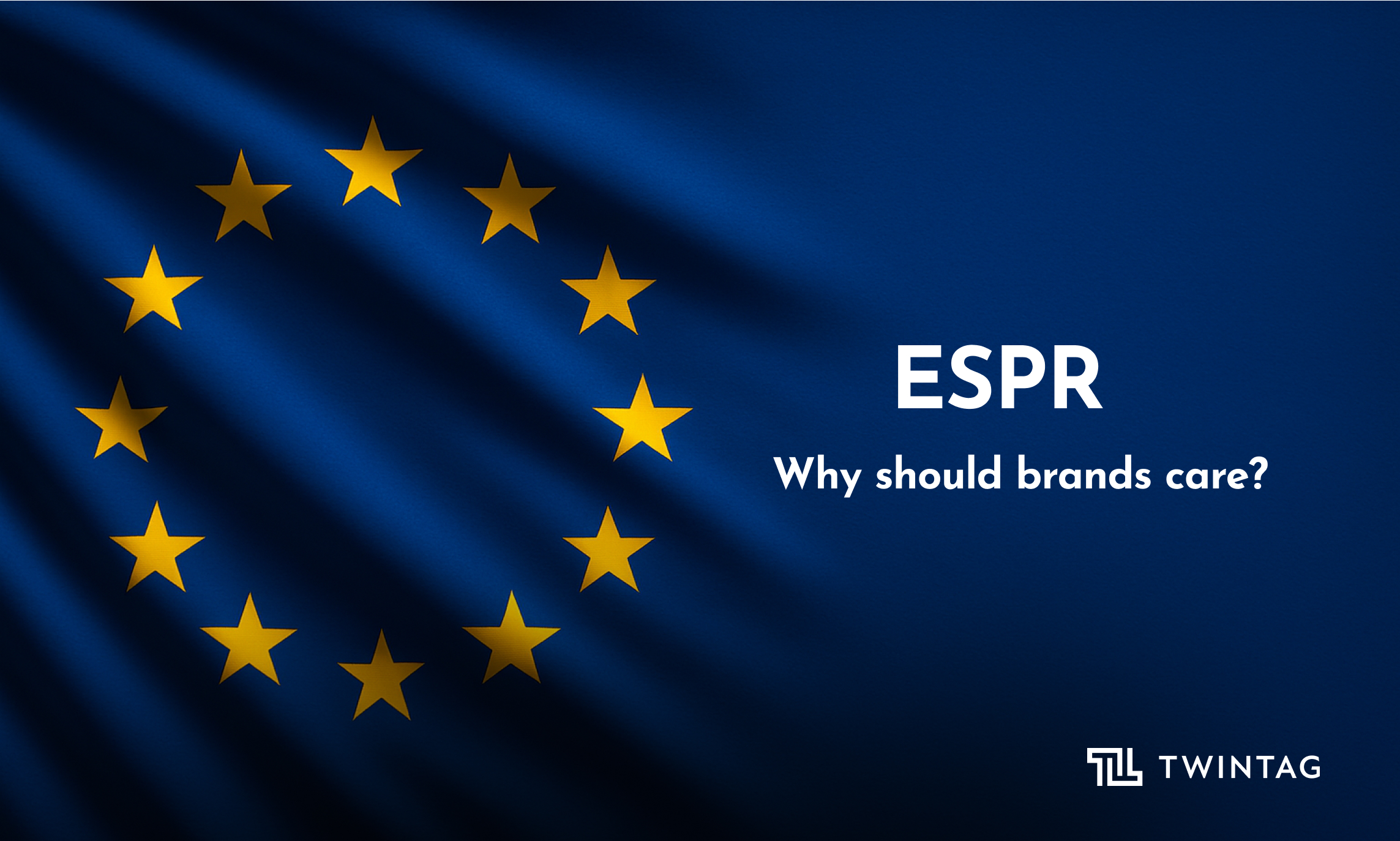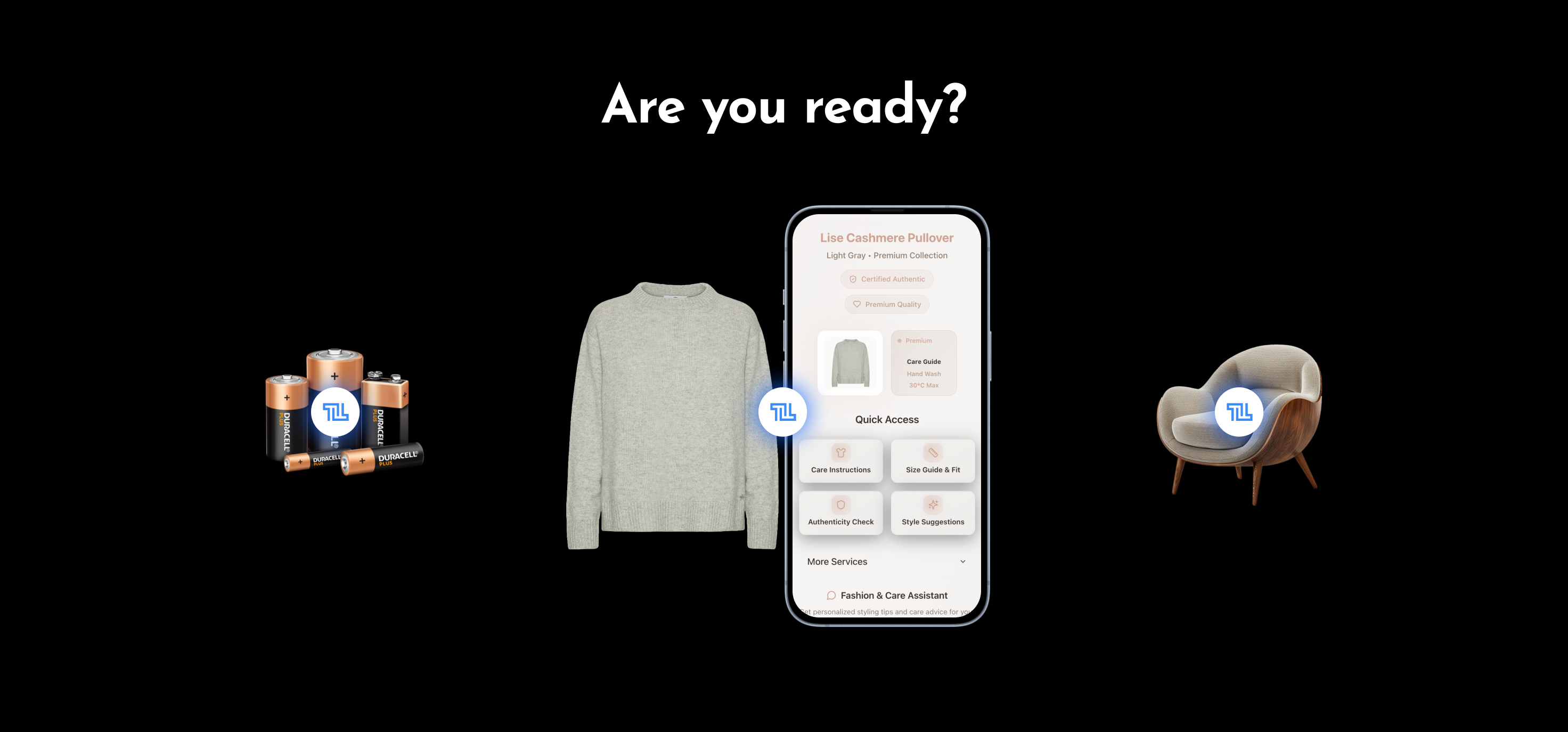How to deliver more value to your customers with on-product services?
Businesses today are adopting service-oriented models to improve various aspects of their operations in the evolving market.

TLDR
Servitization is transforming businesses from product-centric to service-centric business models, enhancing customer experiences and securing recurring revenue. Digital technologies like Twintag enable this shift by linking products to digital twins via QR codes that facilitate personalized customer interactions, efficient service management, scalability, and continuous product innovation. To get started, businesses should first define their scope (product type, user personas, use cases, information parameters, and backend systems), deploy physical (QR codes, tag placement) and digital (business logic, design, data sourcing) components, and then scale by adding more personas, processes, data, and products while refining the solution based on feedback.
Early adopters like Xerox and Rolls Royce exemplify the benefits of this transition. Xerox shifted from selling copiers to offering document solutions, while Rolls Royce’s “power by the hour” program revolutionized the way aircraft engines were leased. These examples highlight the potential of service-driven business models to enhance customer value, build long-term relationships, and improve margins.
Digital technology plays an important role in enabling and optimizing this process. In this article, we will discuss technology’s impact and define how digital solution providers like Twintag can help businesses thrive in this new business environment.
The Role of digital technology in service-oriented models
The current landscape, marked by rapidly changing consumer mindsets and technology-driven improvements, presents new opportunities for manufacturers to differentiate themselves and boost their efficiency. Understanding how digital technologies are reshaping servitization is crucial for transforming it from a strategy into an innovative business model that emphasizes customer-centricity.
Key digital technologies influencing servitization today include:
Cloud and data analytics: uses cloud technology to update old systems and find new opportunities from historical data. It also helps analyze data for smarter decisions.
Internet of Things (IoT): allows real-time monitoring and management of products, predicting when maintenance is needed, optimizing how products are used, and making customers happier with better service.
Artificial Intelligence (AI) and Machine Learning (ML): use smart algorithms to predict maintenance, personalize customer experiences, and make supply chains more efficient. It also automates tasks and customizes solutions.
Augmented Reality (AR) and Virtual Reality (VR): improve customer experiences by showing products in immersive ways, offering remote help, and making training easier. It helps customers understand and enjoy products more.
Blockchain: ensures transactions are transparent and secure, especially in managing supply chains and contracts. It builds trust by keeping a secure record of all transactions.
Connected products (Passive IoT): links physical products to unique digital twins using dynamic QR codes. This makes it easier to track products, manage them better, and improve how customers interact with them.
How Twintag helps companies enhance their product value
At Twintag, we power products and packages with a virtual chip from a single unique identifier (UID), a 'digital twin'-tag to drive dynamic experiences for connected products.

Here is how we support and enhance the shift to service-oriented business models:
Highly-personalized customer experiences
Twintag helps businesses provide personalized experiences to their customers. Each product can deliver context-aware services based on who interacts with it and where it occurs. This ensures that every customer interaction is relevant and tailored to their specific situation, enhancing overall service quality.
Efficient service management
Our digital platform powers the management of services associated with products. It enables businesses to schedule and track maintenance efficiently, update product information, attach manuals, and provide troubleshooting tips directly onto the product.
Scalability and flexibility
Digital technologies offer scalable solutions that can grow with the business. Twintag’s platform, for example, manages millions of products and constantly adapts to changing market conditions and customer needs. This ensures that businesses can maintain high service standards as they expand.
Product innovation and design improvement
The data collected through digital platforms drives innovation by revealing customer behaviour patterns and preferences. Businesses can use these insights to develop new features and services, continually enhancing their offerings and staying ahead of the competition.
Twintag: deployment process and where to start
To alleviate confusion on how to get started, we have created a simplified deployment roadmap to help roll out projects. While this guide is generic and may vary depending on the business type, company size, type of product involved, and specific use case, it provides an overall process description to get you started.
Scope
Define the parameters of your deployment by answering these key questions:
- Product type: which products do you want to start with?
- User personas: who needs to interact with your product, and when?
- Use case focus: what processes are you looking to improve?
- Information parameters: what data do you want to share or collect?
- Backend systems: where will this data be stored in your current system(s)?
Deployment
This phase involves two components: physical and digital.
Physical Deployment:
- Data carrier: Choose between QR codes, RFID, NFC, or existing identifiers like barcodes. QR codes are preferred for ease of scanning and cost-effectiveness.
- Tag placement: Work with packaging/branding teams to ensure the tag is prominently placed.
- Onboarding process: Assign the digital ID to the physical product using pre-printing, in-line printing, or manual application, which may require additional equipment like scanners or printers.
- Material selection: Select materials (woven, metal plate, wood, printed) based on product type for durability.
Digital Deployment:
- Business logic: Outline the actions in the new process and link them to relevant scenarios.
- Design: Create design wireframes based on your branding guidelines.
- Templates vs Custom configuration: You can either start quickly with pre-built templates or decide to build a fully custom user interface tailored to your needs, or go with a combination of both.
- Data and data Sourcing: Determine what data you want to share or collect and where you will store it. Start with manual CSV uploads or integrate directly with your system(s) using our APIs.
Scale
After initial deployment, begin to scale by expanding the scope:
- Add more user personas, processes, and data.
- Test the solution in the market, gather feedback, and refine it.
- Expand to other product lines, integrate additional processes, and connect more information parameters to your existing data systems.
Following this roadmap, you can methodically and effectively digitize your products and processes, ensuring a successful transition to a service-oriented business model.
Conclusion
Digital technology is a crucial enabler of service-oriented models, providing the tools and capabilities needed to offer continuous, value-driven customer experiences. Platforms like Twintag are vital in this transformation, delivering scalable, flexible, and innovative solutions that enhance customer engagement and operational efficiency. By leveraging these technologies, businesses can successfully transition to a service-centric model, securing their competitive edge and driving long-term success in a dynamic market.


-min.png)



